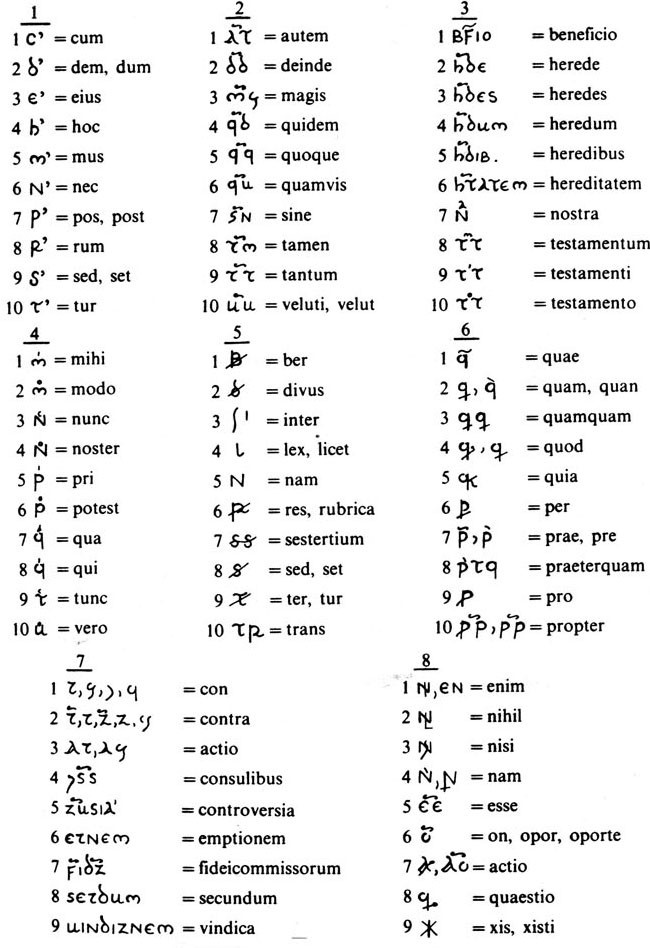

550 to 900 is often termed INSULAR, reflecting this interaction among the peoples inhabiting the regions that we know as the British Isles and Ireland. The art produced during the four centuries from c. Prior to the Viking incursions of the ninth century, the culture of England interacted closely with that of CELTIC Britain and Ireland.

During this time, England was largely occupied and ruled by GERMANIC peoples, primarily the Angles and the Saxons.
#Manuscript abbreviation skin#
For example, the vagaries of fortune are often symbolized visually by a female figure, Fortuna, turning a wheel upon which figures from varied walks of life rise and fall.Īlum tawing is a process for preparing white leather by soaking animal skin in alum (potassium aluminium sulphate). Acanthus ornament was particularly favoured by the CAROLINGIANS, for whom it represented a conscious revival of a Mediterranean form.Ī symbolic depiction of an idea. Medieval renditions of the acanthus are generally not as true to the actual plant as those of Antiquity, reducing it to a cipher consisting of STYLIZED fleshy fronds. Medieval readers would have been familiar with such devices, although there were probably always some that were particularly obscure, and there is evidence that SCRIBES themselves sometimes puzzled over certain abbreviations.Ī foliate motif much used in medieval art and derived from the depiction of the acanthus plant in a decorative context during ANTIQUITY. With the growth of universities, from around 1200, the use of abbreviations proliferated. INSULAR scribes were especially fond of abbreviations, including tironian notae, and Irish scribes used them extensively in order to produce pocket-size GOSPEL BOOKS for study purposes (pocket Gospels). Abbreviations for nomina sacra ('sacred names'), such as the Greek xps form of Christus (see CHI-RHO), occur in EARLY CHRISTIAN works. These short forms are known as notae communes, while abbreviations for specialized jargon in legal texts are known as notae iuris. All three types of abbreviation could be used in the same manuscript, as variable and invariable forms and as phonetic equivalents.ĭuring Antiquity a few common elements were often abbreviated (notably the Latin word endings -bus and -que and the final m and n). They generally fall into three categories: suspensions, in which the end of a word is abbreviated, signalled by the use of a horizontal bar or another graphic symbol contractions, in which another part of a word is abbreviated with the use of a graphic symbol abbreviation symbols, used for whole words and often derived from the tachygraphic (shorthand) systems of ANTIQUITY (that of Tiro, Cicero's secretary, being most influential). Abbreviations were often used to save space and effort when writing.


 0 kommentar(er)
0 kommentar(er)
